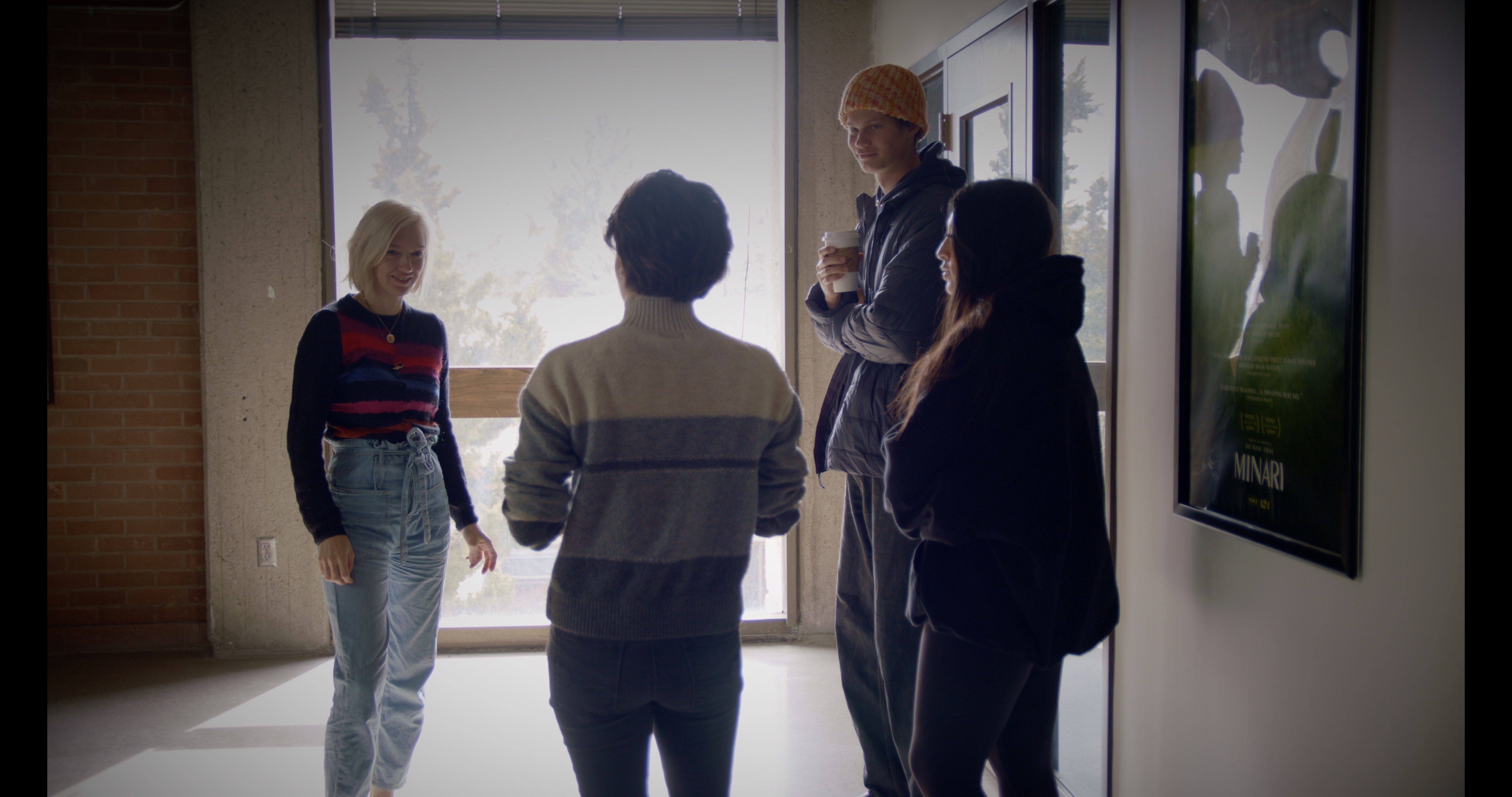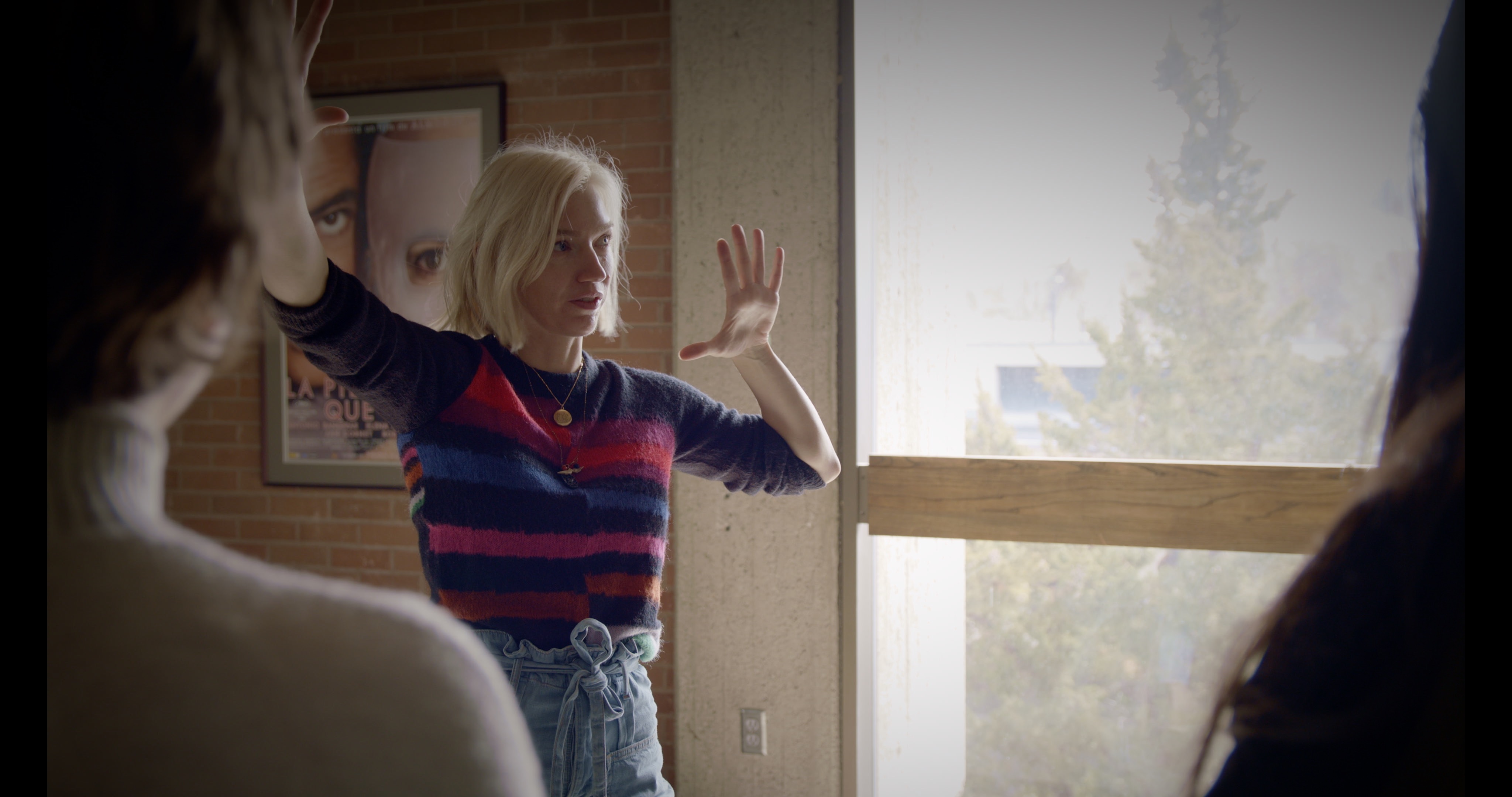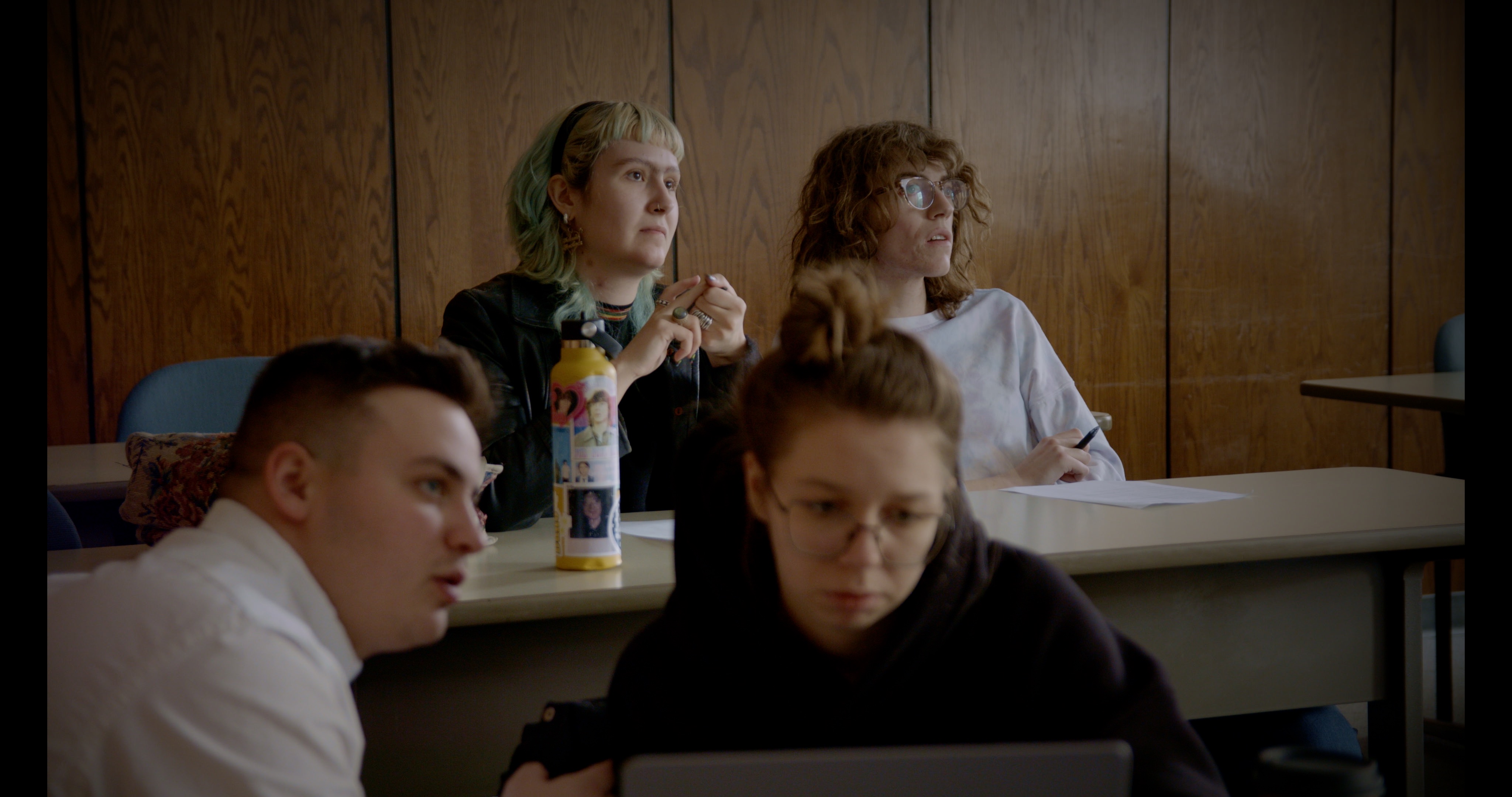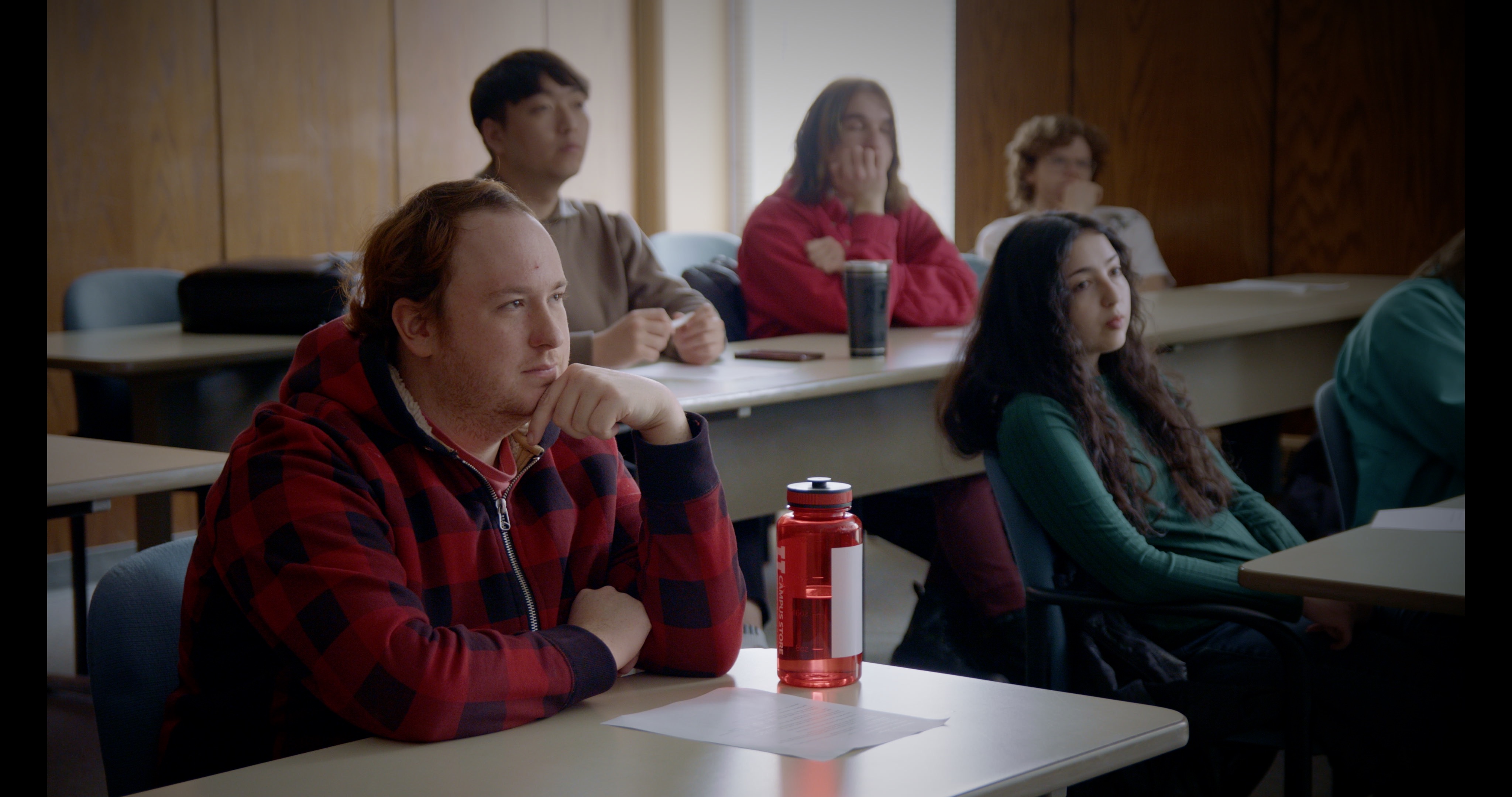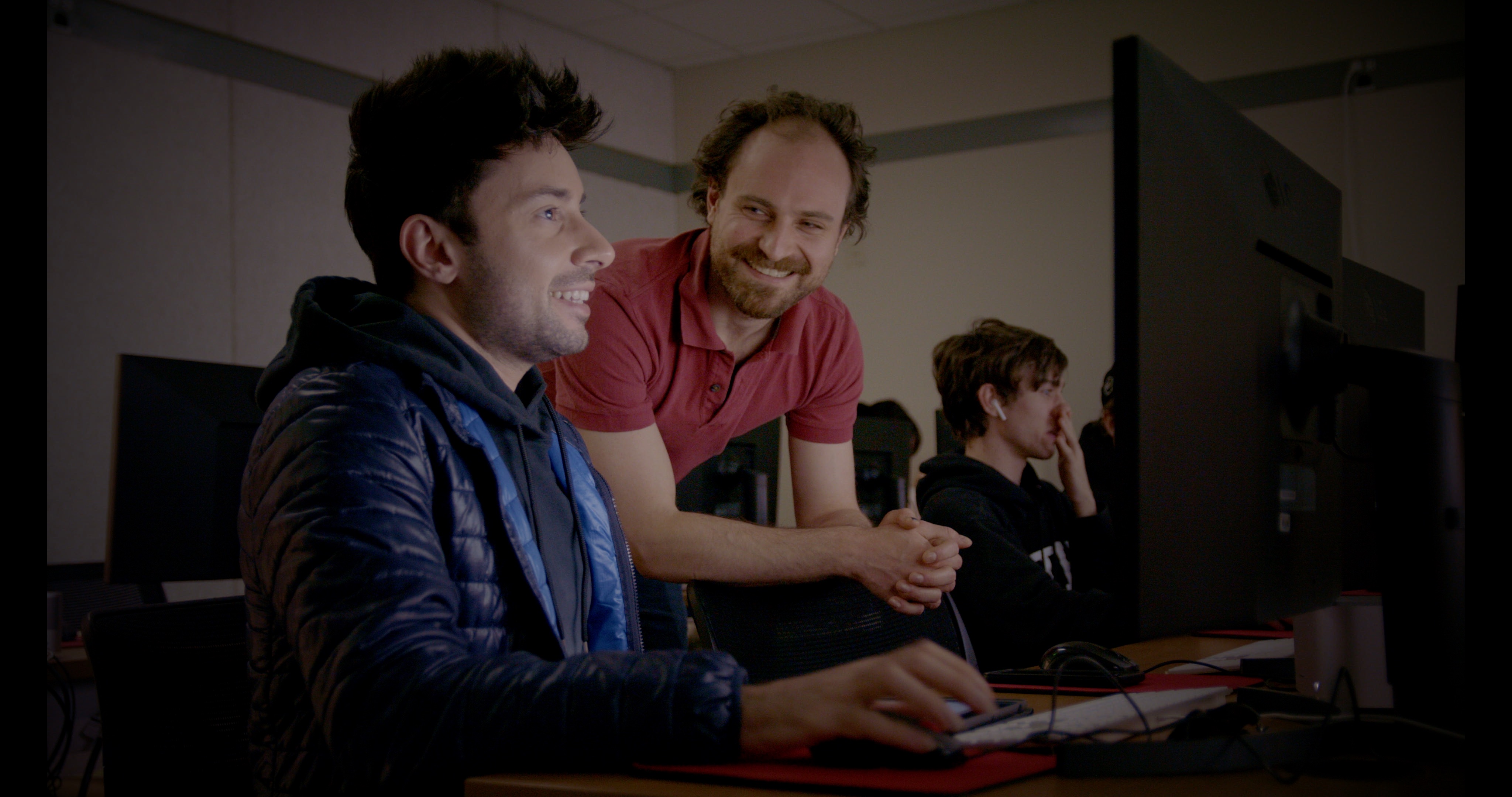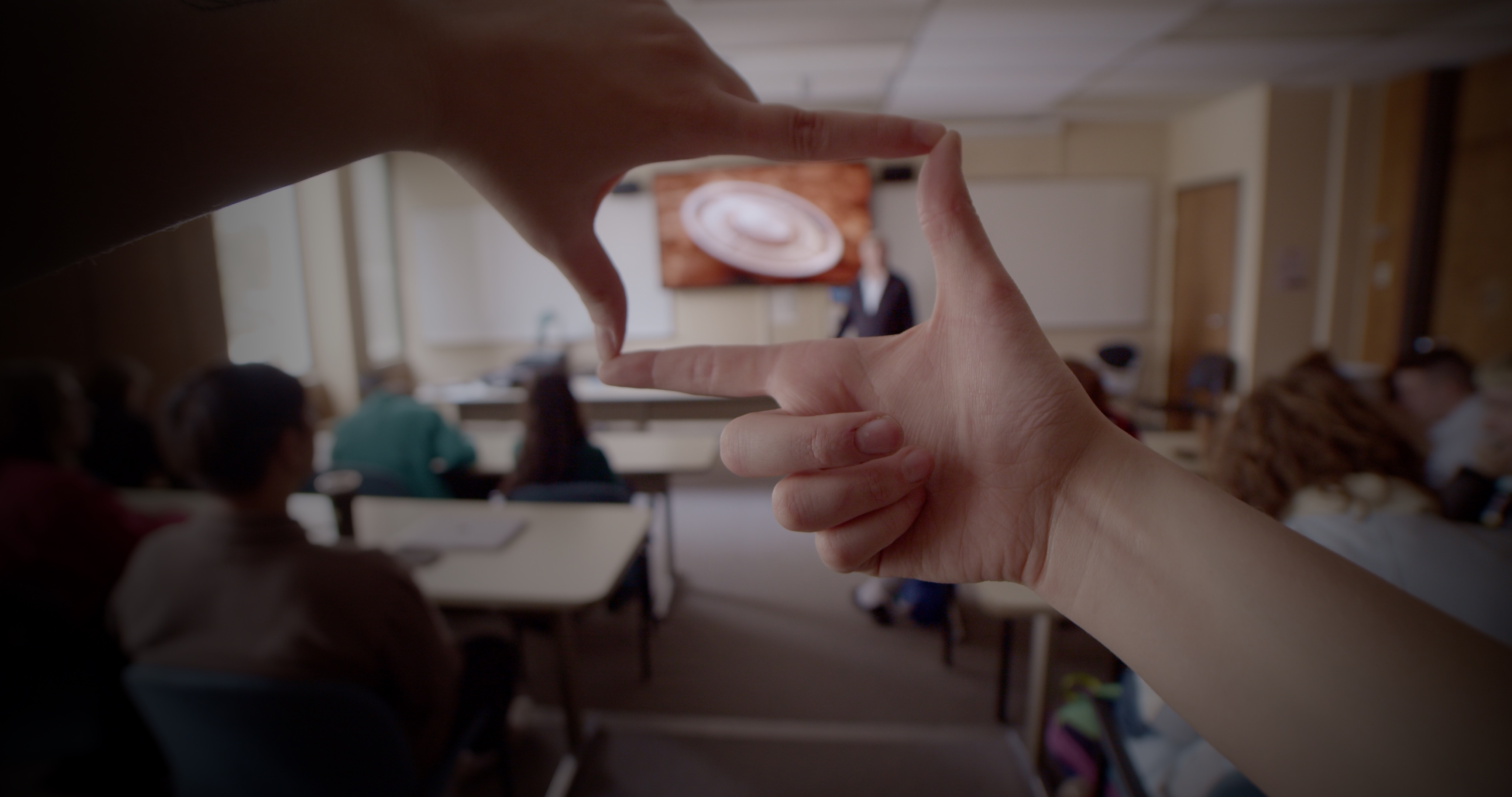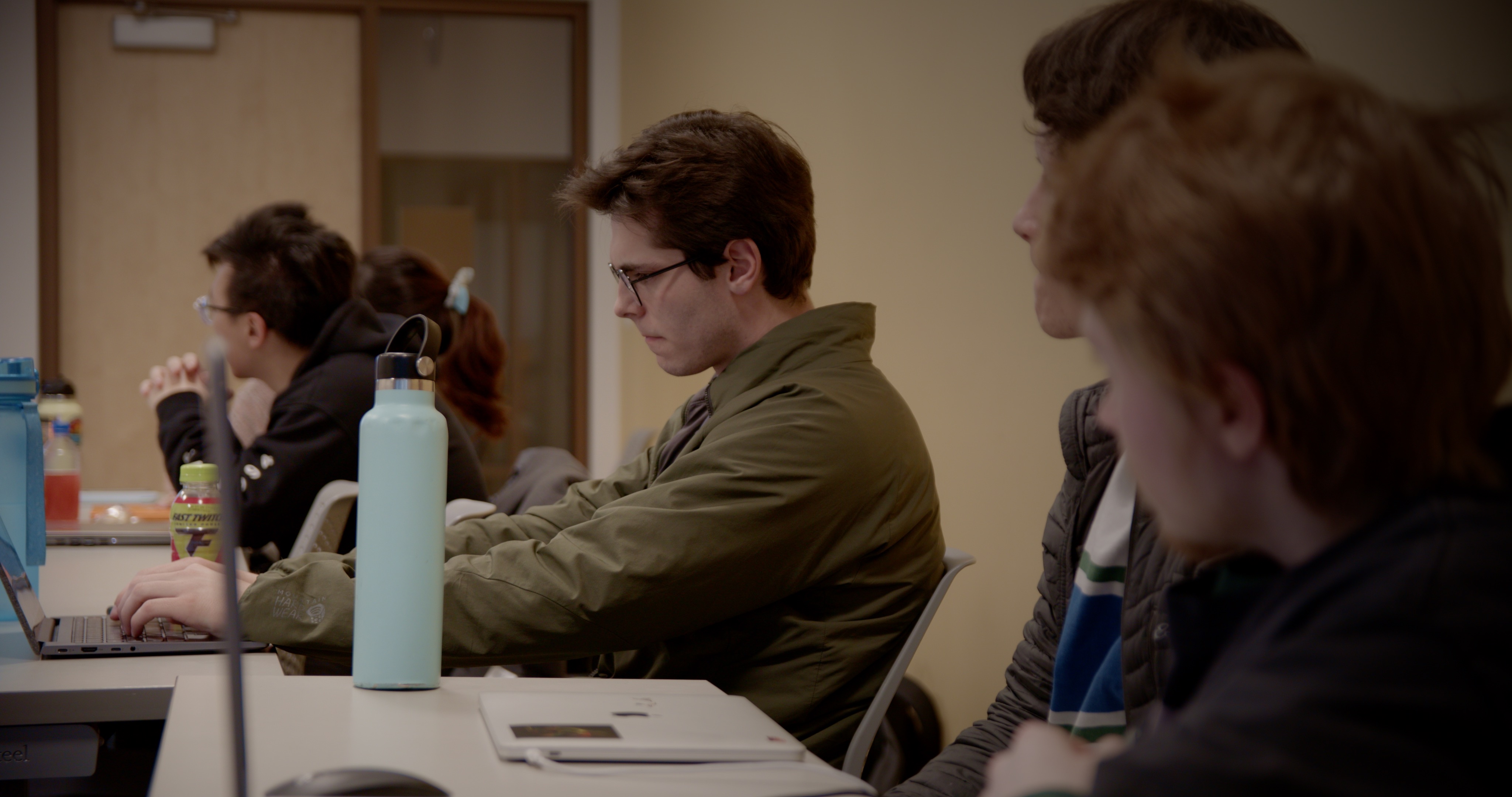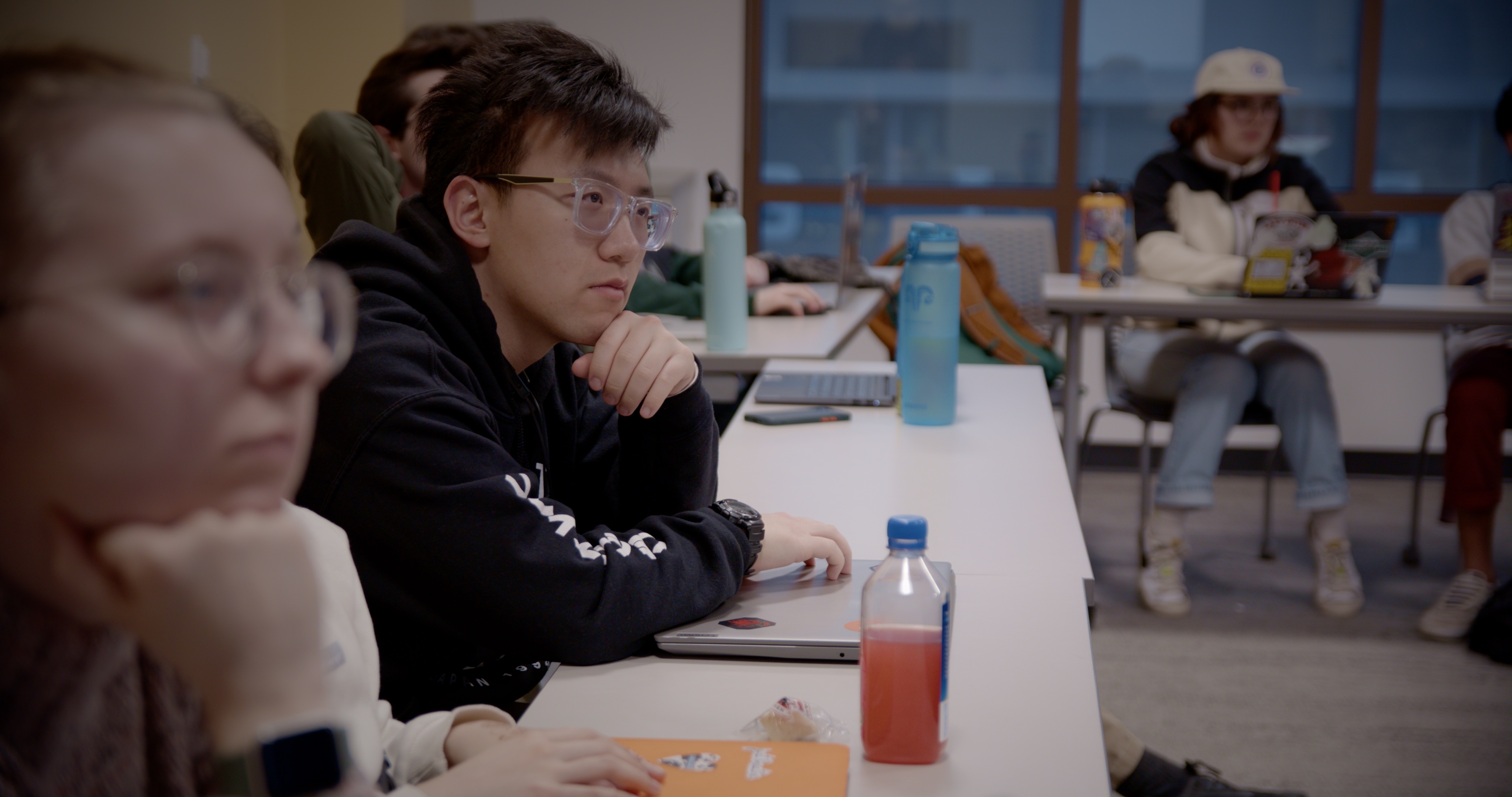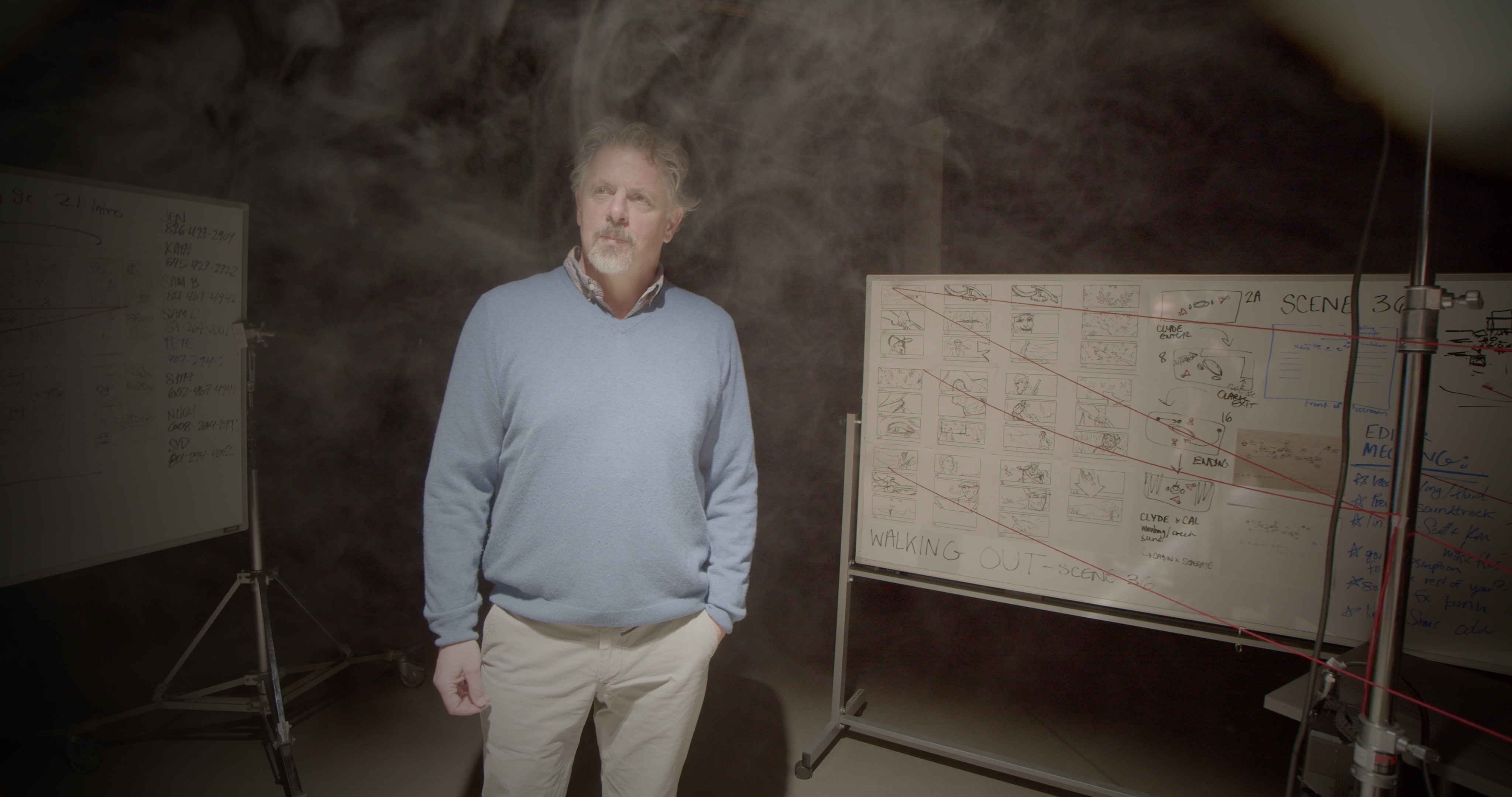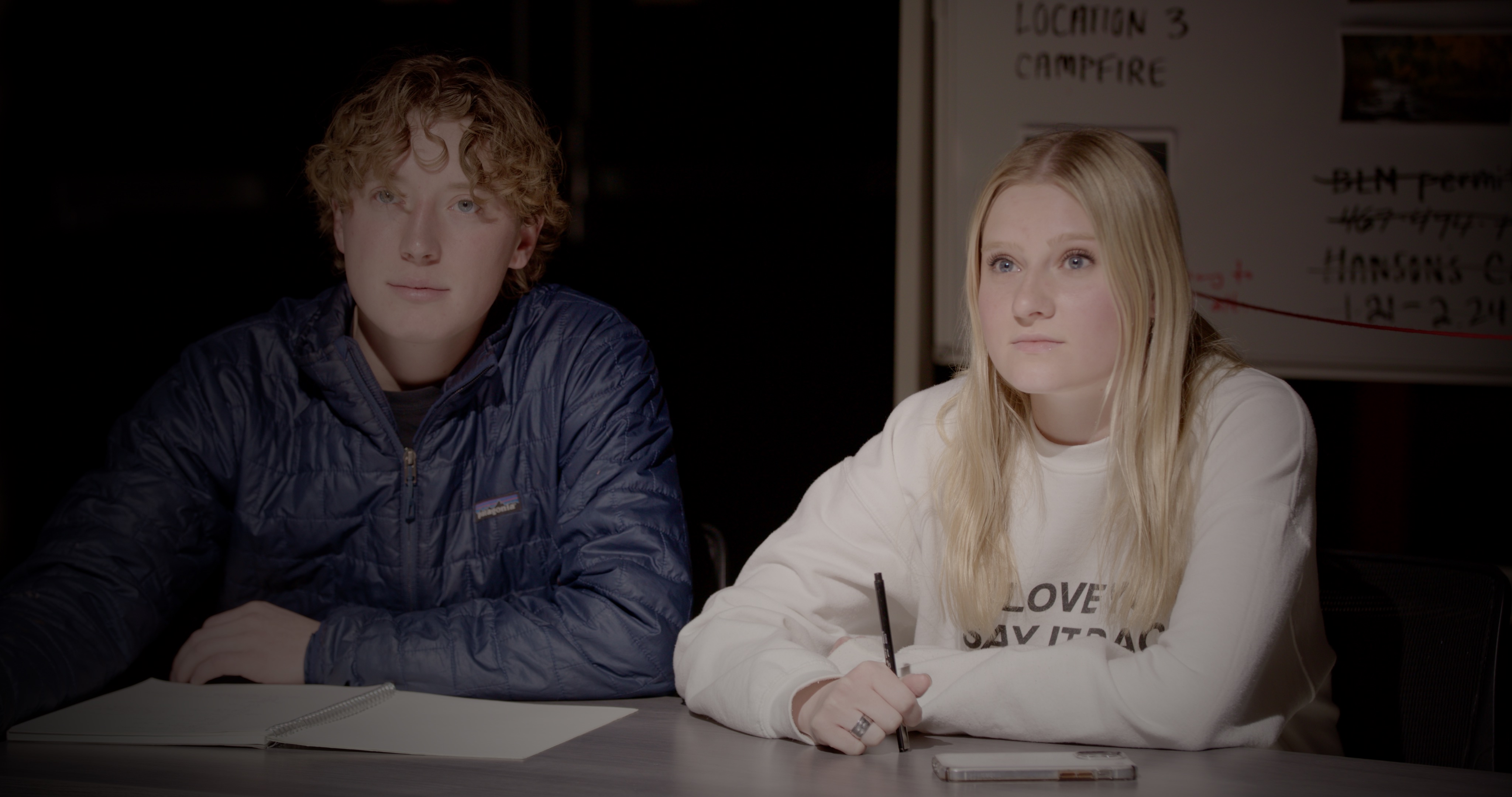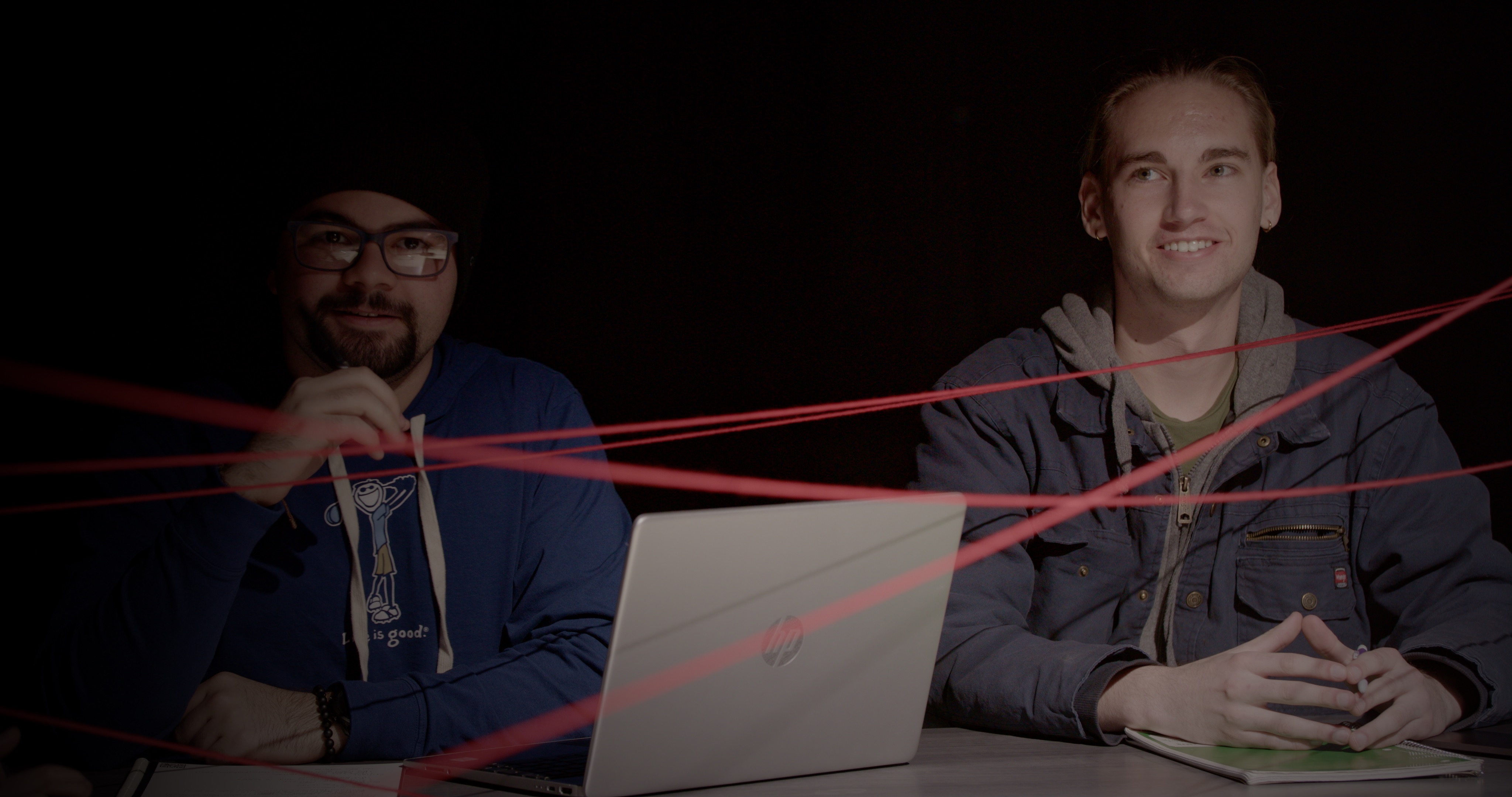Film students working on a lighting set-up (left to right) Gabe Brown, Lana Ballenot. Photo: TWIG Media Lab
WRITTEN BY DEBBIE HUMMEL
PHOTOS TWIG MEDIA LAB
A major transformation is taking shape in the Film & Media Arts Building bringing the University of Utah Film program up to speed and its students prepared to step behind the camera anywhere in the world.
For more than a decade, the program has been working toward building a state-of-the-art studio space, and a couple of years ago the department recognized it needed the new space sooner rather than later, Chair Andrew P. Nelson, PhD said.
“Historically the departments’ biggest challenge has been facilities. We exist in a building built in the 1970s for a museum and we’ve been repurposing things for years waiting for substantial renovations. Some of those changes, after a long wait, are happening,” he said.
In a large room in the nearly windowless building, students can now train in spaces that will prepare them for filmmaking in any major studio.
“Students will be able to step from working in this space to working in any number of situations they would encounter in Los Angeles,” Nelson said.
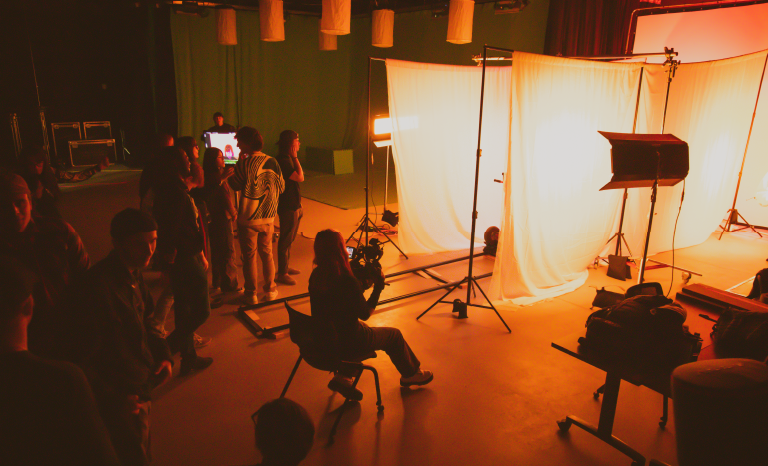
The Advanced Cinematography and Advanced Grip and Lighting students film a project collaboratively. Photo: TWIG Media Lab
After a year of construction, the 1,500-square-foot, high-ceilinged open area where students once built a film set, there is now a massive curved wall, or cyclorama, which gives the impression of infinite space. It can also be lit so the subjects in the foreground don’t cast shadows. Above are lighting rigs that allow students to learn different lighting techniques and the department has also invested in cameras and other equipment that allows students the hands-on training they need to be successful in their careers.
“It’s the kind of upgrade in technology that brings the program again into the forefront of media arts,” Nelson said. “We’ve definitely come a long way in three years. The space is really remarkable.”
Adjacent to the new studio is another space where an XR studio is in the works for virtual production. In the place of the current green screen will be an LCD video wall that will allow for filming scenes with any background imaginable without the dissonance that happens when you see live actors before a green screen.
This is the kind of technology that is used for filming from television commercials to full-length features and allows filmmakers to take away the delays that can be caused by weather or losing a particular light.

“For example, a sunset can last all day,” Nelson said. “It allows our faculty to teach film curriculum that is contemporary.”
The Department of Film & Media Arts was the recipient of a Tourism, Recreation, Culture, and Convention grant from Salt Lake County that will help fuel the final phases of the project, most notably a remodel of the building’s auditorium into a modern cinema.
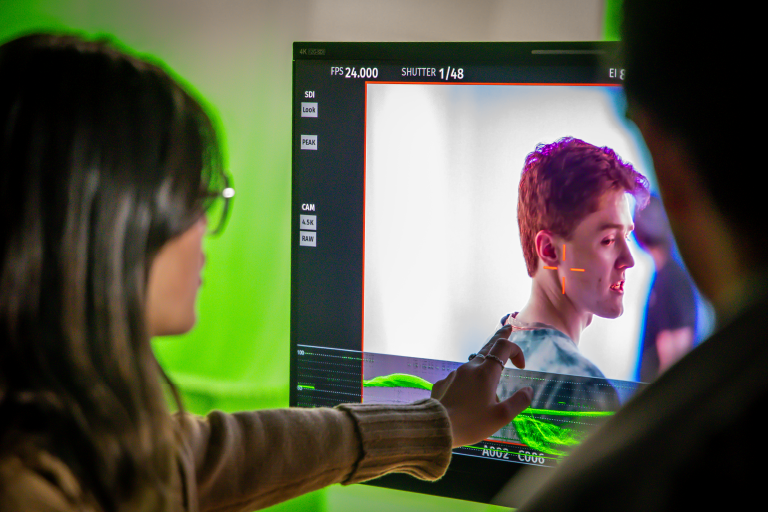
Student Ava Musick studies a shot framing Brandon Labarge. Photo: TWIG Media Lab
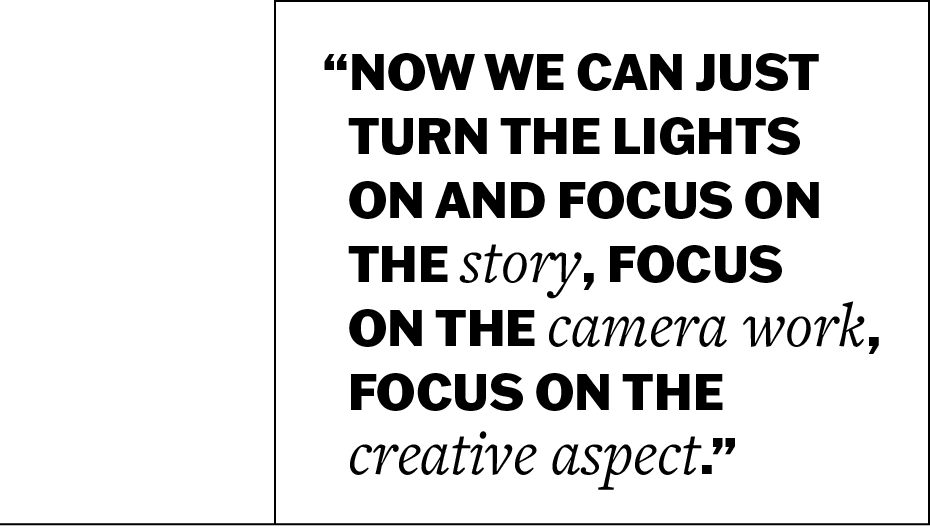
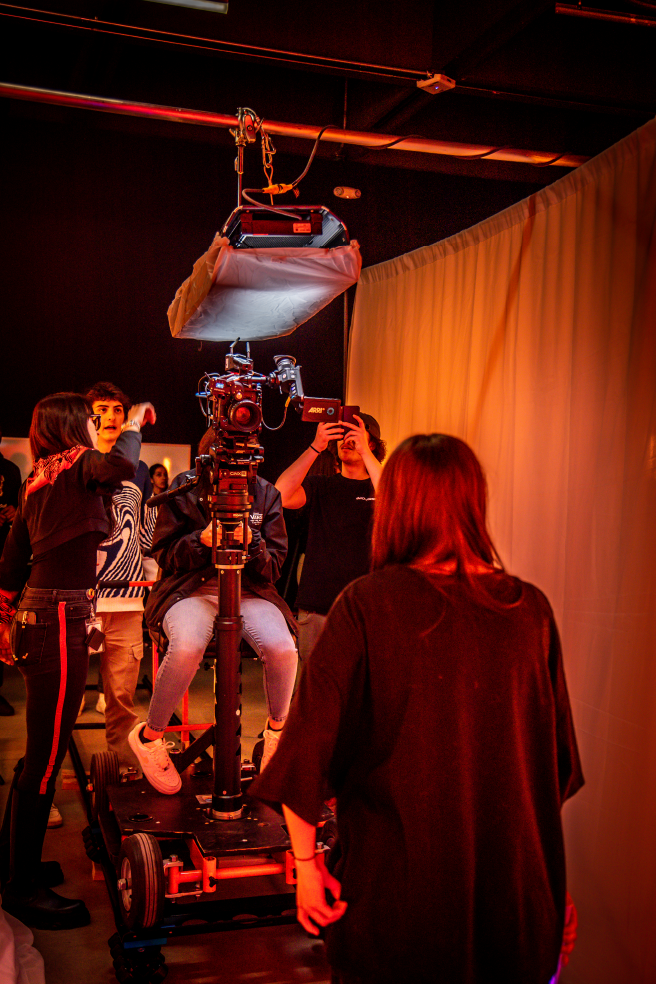
Students in the Advanced Cinematography class rehearse a shot lit by the Advanced Grip and Lighting students. Behind camera: Samantha Mackin frames the shot on the doorway dolly while Lucas Adriá and Miles Nagel provide notes to actor Bailey Peterson. Photo: TWIG Media Lab
The basement auditorium in the building, at 414 seats, is the largest general assignment auditorium on campus. The planned remodel will convert the auditorium to a more reasonable 250-seat cinema that will be worthy of screening student films and available for other outside events. Once completed, the state-of-the-art cinema will be capable of screening films in a variety of both digital and analog formats.
The pared down size of the auditorium will also allow for office spaces for the department’s award-winning faculty.
Nelson says the roughly 700 Film & Media Arts majors who come to the U for the quality and caliber of the faculty will also now have an upgrade in the quality and professionalism of facilities available for all degree levels. Among the department’s talented faculty are twin sisters Miriam and Sonia Albert-Sobrino. The Also Sisters, as they’re also known, came to the U in 2011 for an MFA in Film Production and since 2018 are tenure-track faculty.
“When we came to the department, it was very small. There were just a few basic production courses,” Sonia said.
Those production courses could be cumbersome, spending more time fitting the space to filmmaking rather than practicing filmmaking techniques, the sisters said.
“Now the space is a professional setup conducive to focusing on capturing images,” said Miriam. “Because it is professionally built, the students are able to practice something in this studio and when they move onto a professional career they can go to a similar space and be able to navigate that comfortably.”
A classroom space is situated adjacent to the cyclorama allowing for more efficient teaching.
“Now we can just turn the lights on and focus on the story, focus on the camera work, focus on the creative aspect,” Sonia said.
The improvements also include a number of different cameras and the needed stands and screens to make for a professional environment.
“When teaching, you don’t have to speak of an abstract. You can demonstrate live what in the past was, ‘look at this picture and get a sense of what you could one day work with’,” Miriam said.
As teachers, they are also excited about other improvements in the building that they feel are helping students work collaboratively and creatively.
“We have a new gallery, a conference room, and the student commons: a specific student-oriented area where they can work on their projects 24-7,” Miriam said. “The overall space in the building is now, more than ever, conducive to collaboration, a critical aspect in the process of making a film.”
The new gallery space, the Alvin Gittins Gallery, will host rotating exhibits of student work from many different disciplines in the university’s College of Fine Arts, particularly the Department of Art & Art History.
“Our improved space allows our students to be exposed to art in so many ways beyond filmmaking,” Sonia said. “We want our students to become artists who tell compelling stories. By immersing them in this space, where art surrounds them, we are certainly enriching their experience and the stories that they hope to tell in their films.” ▪



